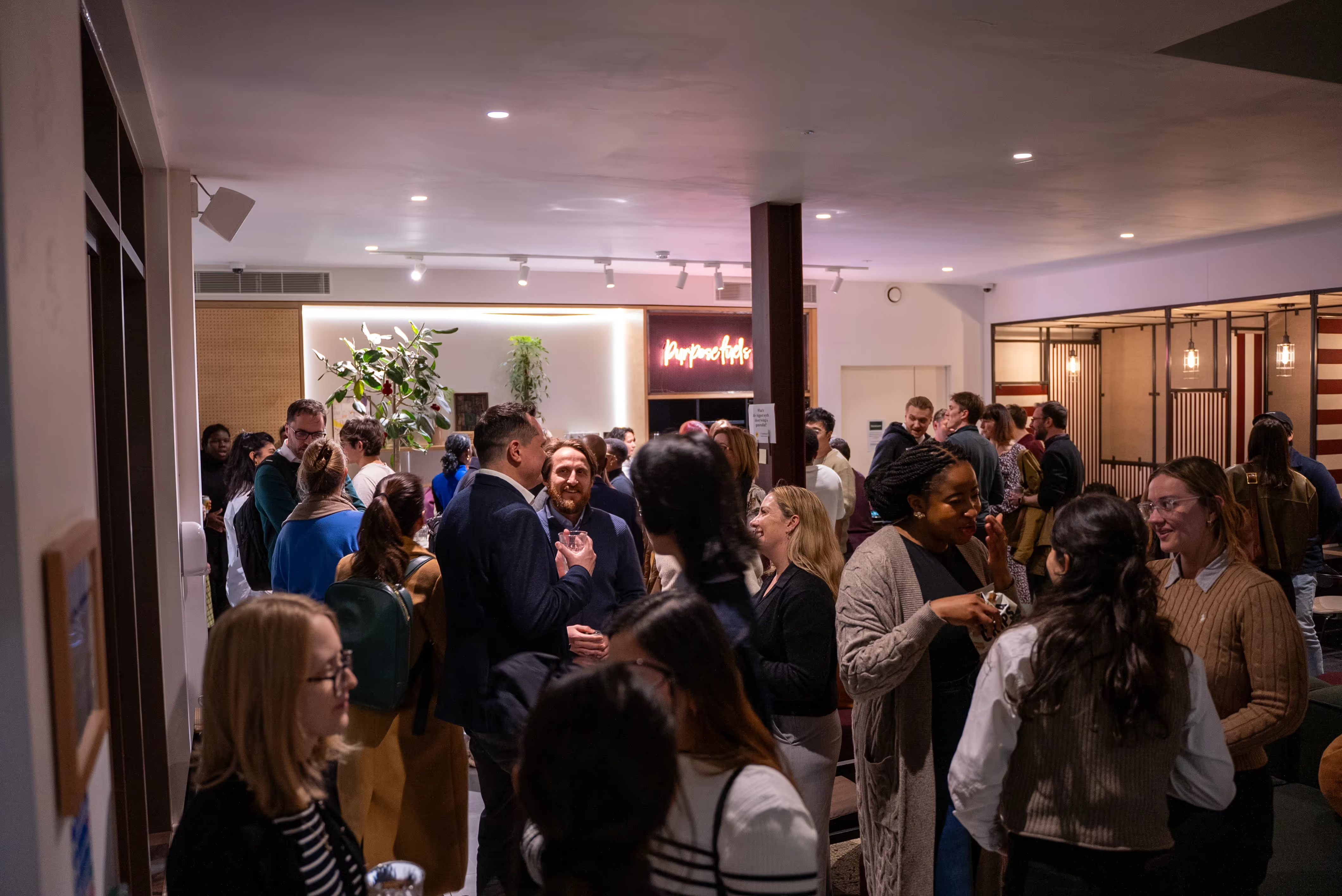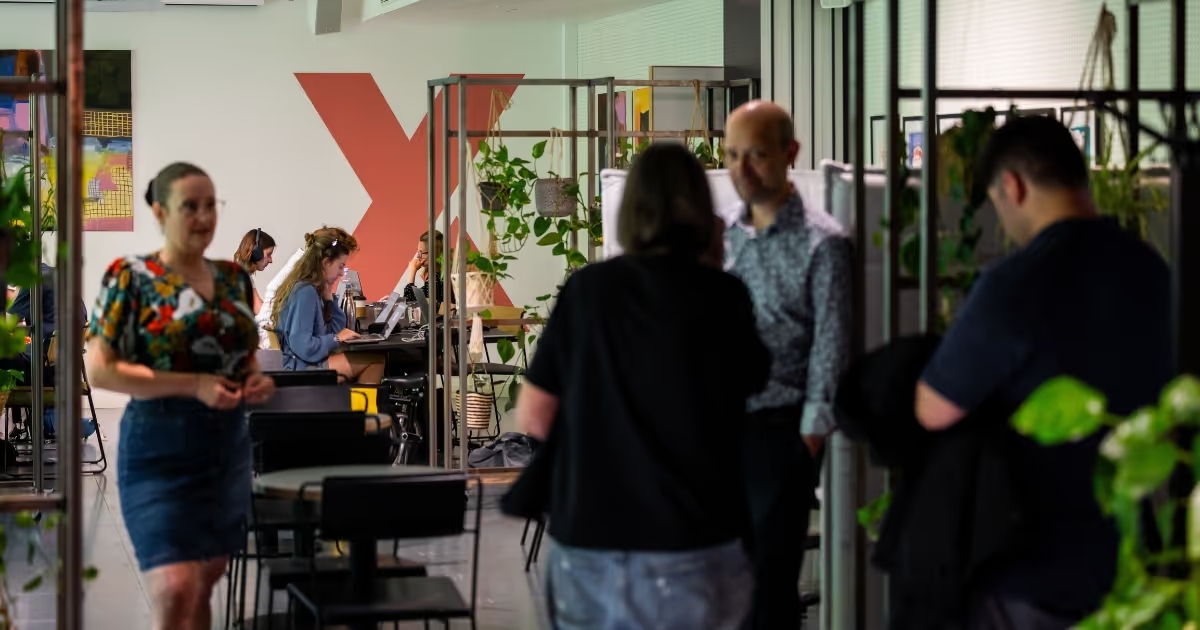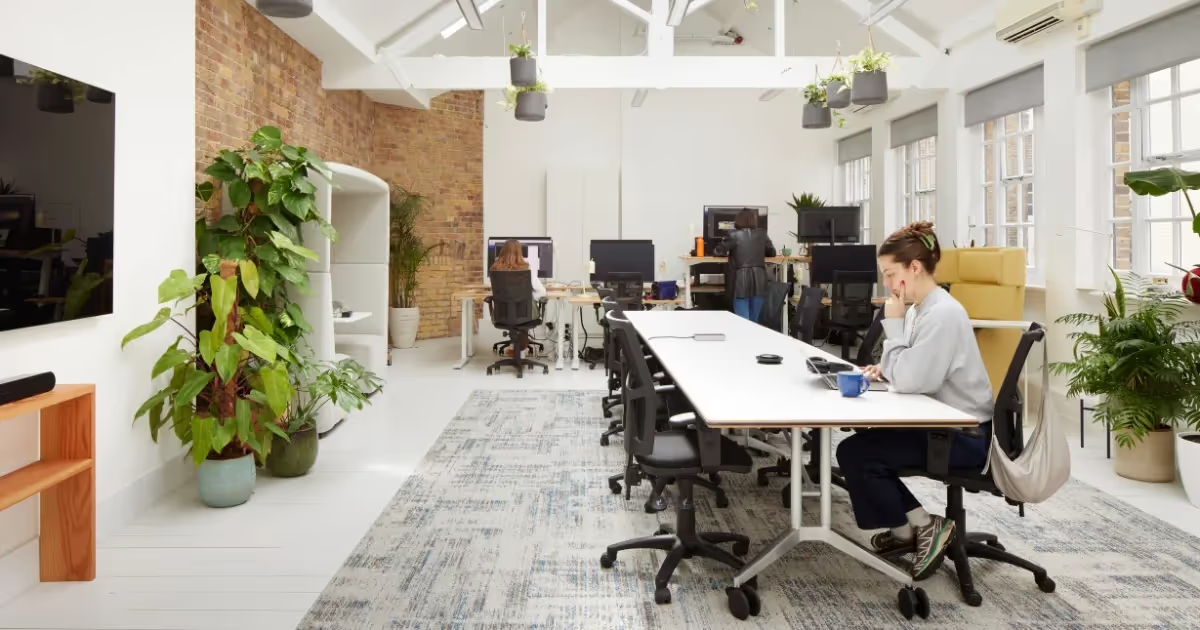The hybrid workplace is here to stay - signifying neither the death of the office, nor a return to the way things once were. The hybrid office mixes the benefits of a remote workforce, with the community, collaboration and culture of a local co-working space or satellite offices. A hybrid design does what it says on the tin - offering the best of both worlds. This allows companies the flexibility, agility and reduced overheads of a more decentralised and distributed model, while enhancing employee autonomy, creativity and satisfaction.
The hybrid workplace is here to stay - signifying neither the death of the office, nor a return to the way things once were. The hybrid office mixes the benefits of a remote workforce, with the community, collaboration and culture of a local co-working space or satellite offices. A hybrid design does what it says on the tin - offering the best of both worlds. This allows companies the flexibility, agility and reduced overheads of a more decentralised and distributed model, while enhancing employee autonomy, creativity and satisfaction.
{{divider}}
Harnessing the best of this opportunity means considering the new opportunities and trade-offs that it will create carefully. For example, employees will now have different access to resources and levels of visibility, changing team dynamics and information accessibility. Many employees will find that instead of needing to commute to a central HQ, they can now work from the comfort of their home or a local co-working space, which will also provide added diversity to their network.
{{divider}}
Balancing working from home with access to a local workspace of choice is vital for wellbeing, catering to the emotional and task-based social support provided by peers. Working from home full time comes with many challenges, including isolation, a lack of work-life separation, weaker technological setup and infrastructure, and reduced opportunity to collaborate. The ability to effectively navigate a hybrid environment is a skill that all teams will increasingly develop as the office of the future unfolds.
{{divider}}
Hybrid environments and the move towards increasingly remote work rewards employees and teams who think and act adaptably and flexibly, who are able to organise and coordinate across a complex and dynamic environment, and who are able to establish and provide evidence of their own trustworthiness when working in a context of decreased visibility. This means being independent, reliable, honest, in-sync and transparent.
{{divider}}

Teams are leveraging new methods of technology in order to stay mobilised and connected, facilitating access to resources, enhancing communication and providing personalised data, insights and adjustments to tenants and customers utilising smart offices. The hybrid format is dynamic, and favours smaller moving targets which will find it easier to navigate flexibly without compromising on cohesion. Managers in this environment continue to foster this through establishing a culture of psychological safety as well as individual and collective trust.
{{divider}}
According to data from WKspace, 62% of employees favour the hybrid approach to work and 35% say they want to return to the office for collaborative purposes. What hybrid working means in practice is slightly different for every company, as its effect on culture, vision and wellbeing will depend in how it is implemented. However forward-thinking organisations are already future-proofing their models by putting their foot on the pedal and starting to experiment with what works best for them.
{{divider}}
On a global scale, the hybrid workplace has positive implications for improved sustainability, and embracing hybrid working is not only increasing efficiency and productivity, but equally reducing travel and accelerating the reduction of our carbon footprint, helping companies move towards a carbon neutral objective. Places such as London have already taken the opportunity to increase the congestion charge to 7 days a week while modifying roads to discourage vehicle-use, while workplaces make complementary adjustments including better bike storage and access to local meeting rooms.
{{divider}}
A hybrid approach is fast proving itself to be a win-win solution with limited drawbacks. For the modern company, it provides stability through flexibility, reduced overheads from lower space wastage and improved adaptability, shorter lease commitments, a greater ability to evolve with the needs of a fast-changing environment, and improved employee customisation. For example by encouraging a stronger work-life balance, those with families will now find it easier to blend work and home commitments via a more flexible approach to work hours and location.
{{divider}}
In the COVID era, hygiene in the hybrid workplace is of crucial importance, and a more flexible and autonomous approach can help ease anxiety employees may have relating to returning to a public workspace, especially if they can avoid lengthy public transit. This is particularly critical for those caring for, or who are themselves, immunocompromised. Most flexible workspaces are effectively adopting means of keeping spaces compliant with on-going social distancing procedures, as well as installing the latest in clean-tech technology.
{{divider}}
Additionally, a hybrid workplace can help build a crisis resilient culture by preparing organisations for potential future lockdowns. With many employees already working from home, the workplace can easily adapt back to a fully remote environment if necessary. When implemented correctly, a hybrid workplace plan is able to limit the divide between those who work in the office and those who don’t. The challenges presented by such a model are nothing all that new, but the recent pandemic has catalysed the need for better approaches to solving them.
{{divider}}
Intranets play a key role in the success of a hybrid workplace by providing centralised repositories for ever-changing information related to the pandemic. They also make it easier to exchange information and mass-release important announcements. There is a greater chance a hybrid workplace initiative will be successful if employees feel included in the journey and related discussions, and connected digital platforms provide the opportunity to do so, with expectations and outputs being effectively cross-communicated.
{{divider}}
The silver lining to the pandemic may be that it has allowed us to re-examine the workplace, whereby re-imagining it in the hybrid format empowers organisations and employees alike to move towards a more autonomous, flexible and resilient approach. But for the hybrid workplace to be successful, it must be well planned and executed, and not treated as a novel experiment. While the hybrid workplace may seem like an answer to a temporary problem, it’s really a solution for the future of work and is about finding ways to structure and balance work, safety, communication, and mental health. This could mean that in the longer-term, we are left with a society and workforce that finds itself healthier, happier and more productive than ever before.
{{divider}}





.png)
.avif)


.avif)


.avif)
.avif)



